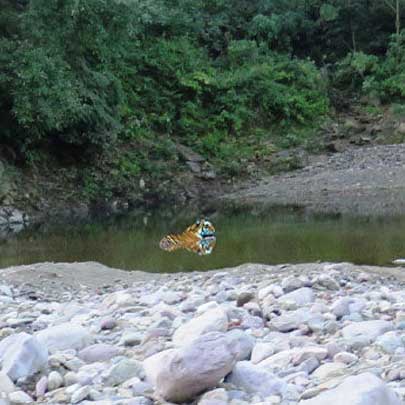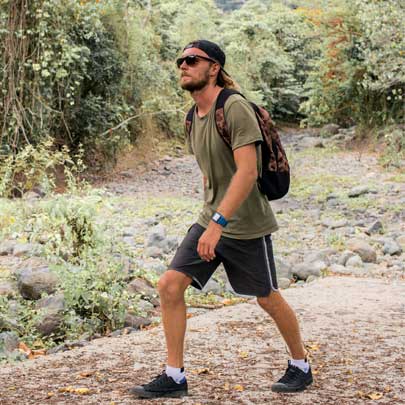Eco-Tourism: Travelling Sustainably in 2025
Eco-Tourism: Travelling Sustainably in
2025
> Introduction <

As we step into 2025, the world of travel is experiencing a massive transformation. More travelers are seeking meaningful experiences that do not harm the planet but instead protect it. This shift has given rise to eco-tourism—a movement that blends adventure, culture, and sustainability. Unlike traditional tourism, which often exploits natural and cultural resources, eco-tourism emphasizes responsible travel, conservation, and community well-being.
In today’s world, where climate change, biodiversity loss, and environmental degradation are pressing concerns, eco-tourism is no longer just a trend—it’s a necessity. From reducing carbon footprints to supporting local communities, eco-tourism is reshaping how we explore the world. Organizations like Wildlense are at the forefront of this movement, offering travelers opportunities to connect with nature while preserving it for future generations.
In this blog, we’ll dive deep into eco-tourism in 2025, explore sustainable travel practices, and show you how you can be part of this global change.
What is Eco-Tourism?
Eco-tourism is more than just “green travel.” It is defined by the International Ecotourism Society (TIES) as “responsible travel to natural areas that conserves the environment, sustains the well-being of the local people, and involves interpretation and education.”
Key elements of eco-tourism include:
-
Conservation of natural resources
-
Minimizing environmental impact
-
Cultural respect and awareness
-
Community empowerment and economic benefit
In 2025, eco-tourism has become an integral part of the global tourism industry. According to recent reports, searches for “sustainable travel” and “eco-friendly tourism destinations” have skyrocketed as travelers prioritize sustainability.
Why Eco-Tourism is Important in 2025

The urgency for sustainable travel has never been greater. Tourism is responsible for nearly 8% of global greenhouse gas emissions. With global travel demand returning to pre-pandemic levels in 2025, eco-tourism plays a key role in:
-
Protecting Natural Habitats – Ensuring fragile ecosystems like coral reefs, rainforests, and wetlands survive.
-
Reducing Carbon Footprints – Encouraging eco-friendly transportation and accommodation.
-
Empowering Local Communities – Supporting indigenous and rural populations through responsible tourism.
-
Preserving Cultures – Promoting respect for traditions and heritage instead of exploiting them.
-
Promoting Conscious Travel – Educating travelers on their impact and choices.
Top Sustainable Travel Trends in 2025
1. Carbon-Neutral Travel
Travelers in 2025 are increasingly looking for carbon offset programs and eco-certified airlines. Many are opting for slow travel, choosing trains, buses, or electric vehicles over flights.
2. Eco-Friendly Accommodations
The demand for eco-lodges, green hotels, and homestays has grown significantly. These accommodations minimize waste, use renewable energy, and support local artisans.
3. Digital Nomad Eco-Hubs
With remote work becoming mainstream, eco-friendly digital nomad hubs are on the rise. These hubs allow people to live sustainably while working remotely.
4. Wildlife Conservation Tourism
Travelers are increasingly seeking experiences where they can contribute directly to conservation. Organizations like Wildlense provide eco-retreats and safaris that focus on wildlife protection and education.
5. Zero-Waste Travel
Reusable bottles, bamboo cutlery, solar-powered chargers, and biodegradable products are becoming essential travel items.
How to Travel Sustainably in 2025
If you want to embrace eco-tourism in 2025, here are some tips:
-
Choose Eco-Friendly Transportation – Use public transport, carpool, or cycle when possible. Consider eco-certified airlines if air travel is unavoidable.
-
Book Sustainable Stays – Opt for hotels and retreats that follow eco-certification standards. For example, Wildlense Wild Retreats offer eco-friendly accommodations surrounded by nature.
-
Respect Local Cultures – Learn about the traditions, languages, and customs of the communities you visit.
-
Pack Light & Smart – Lighter luggage means lower fuel consumption. Carry reusable and sustainable products.
-
Support Local Businesses – Buy local handicrafts, eat at family-owned restaurants, and use local guides.
-
Reduce Plastic Usage – Carry a refillable water bottle and avoid single-use plastics.
-
Participate in Conservation Activities – Volunteer in wildlife protection programs or eco-camps.
Popular Eco-Tourism Destinations in 2025
Travelers in 2025 are increasingly choosing destinations that promote sustainable and responsible tourism. Some top eco-tourism hotspots include:
-
Costa Rica – Famous for its rainforests, national parks, and wildlife sanctuaries.
-
Bhutan – The world’s first carbon-negative country with eco-conscious tourism policies.
-
Norway – Known for fjords, renewable energy, and eco-friendly adventures.
-
India – From tiger reserves to Himalayan treks, eco-tourism is thriving with organizations like Wildlense leading the way.
-
Kenya – Sustainable safaris focusing on wildlife conservation.
Wildlense: Redefining Eco-Tourism in India
When talking about eco-tourism in 2025, one cannot overlook Wildlense, an organization committed to connecting people with nature while promoting conservation.
How Wildlense Promotes Sustainable Travel:
-
Eco-Retreats: Wildlense offers Wild Retreats that are designed with minimal environmental impact and maximum connection with nature.
-
Wildlife Conservation: Travelers can participate in safaris, photography, and awareness programs that support wildlife protection.
-
Community Engagement: Wildlense works closely with local communities, creating economic opportunities and promoting cultural awareness.
-
Educational Programs: Through workshops and retreats, Wildlense educates travelers on eco-friendly living and sustainable practices.
By choosing Wildlense, travelers don’t just take a vacation—they contribute to a larger mission of responsible and sustainable travel.
Benefits of Eco-Tourism
Eco-tourism brings countless benefits to travelers, communities, and the planet.
For Travelers:
-
Meaningful experiences with nature and culture
-
Personal growth and eco-conscious awareness
-
Health benefits from being in natural environments
For Communities:
-
Economic growth through tourism income
-
Preservation of traditional skills and culture
-
Opportunities for education and skill development
For the Planet:
-
Conservation of biodiversity
-
Reduced carbon emissions
-
Protection of endangered species and habitats
Conclusion
Eco-tourism in 2025 is more than just a way of traveling—it’s a movement towards a greener and more responsible world. Travelers today want to leave behind more than footprints; they want to create positive impacts on communities and ecosystems. By making mindful choices, supporting eco-friendly businesses, and embracing organizations like Wildlense, we can ensure that travel becomes a force for good.














































































